|
Books Should Be Free Loyal Books Free Public Domain Audiobooks & eBook Downloads |
|
|
Books Should Be Free Loyal Books Free Public Domain Audiobooks & eBook Downloads |
|
Plays |
|---|
|
Book type:
Sort by:
View by:
|
By: Mary Wollstonecraft Shelley (1797-1851) | |
|---|---|
 Proserpine and Midas
Proserpine and Midas
| |
By: Mercy Otis Warren (1728-1814) | |
|---|---|
 The Group A Farce
The Group A Farce
| |
By: Michael Strange | |
|---|---|
 Clair de Lune A Play in Two Acts and Six Scenes
Clair de Lune A Play in Two Acts and Six Scenes
| |
By: Molière | |
|---|---|
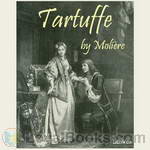 Tartuffe
Tartuffe
Jean-Baptiste Poquelin, known by his stage name Molière, was a French playwright and actor who is considered to be one of the greatest masters of comedy in Western literature. Among Molière's best-known works is Tartuffe or The Hypocrite, written in 1664. Though Tartuffe was received well by the public and even by Louis XIV, its popularity was lessened when the Archbishop of Paris issued an edict threatening excommunication for anyone who watched, performed in, or read the play.Tartuffe, a pious fraud who pretends to speak with divine authority, has insinuated himself into the household of Orgon... | |
By: Moliere (1622-1673) | |
|---|---|
 The Imaginary Invalid
The Imaginary Invalid
The Imaginary Invalid is a three-act comédie-ballet by the French playwright Molière. It was first performed in 1673 and was the last work he wrote. The plot centers around Argan, the 'imaginary invalid' who is completely dependent on his doctors and wants to marry his daughter to a doctor against her will, so that he will always have medical care freely available to him. In an ironic twist of fate, Molière collapsed during his fourth performance as Argan on 17 February and died soon after. | |
By: Molière (1622-1673) | |
|---|---|
 School for Husbands
School for Husbands
In 1661 and 1662 Moliere presented the plays The School for Husbands and then The School for Wives. "The central situations of the two have much in common: the arbitrary and jealous lover to whom circumstances have given almost the authority of a husband: the simple ward rescued from physical constraint by the unfettered cunning of love." In between writing the two plays he got married. Listen to both and see if this comedic genius of the farce changed his attitude. - Summary by ToddHW and The Translator Cast... | |
 School for Wives
School for Wives
In 1661 and 1662 Moliere presented the plays The School for Husbands and then The School for Wives . "The central situations of the two have much in common: the arbitrary and jealous lover to whom circumstances have given almost the authority of a husband: the simple ward rescued from physical constraint by the unfettered cunning of love." In between writing the two plays Moliere got married. Listen to both and see if this comedic genius of the farce changed his attitude. - Summary by ToddHW and... | |
 Impromptu of Versailles
Impromptu of Versailles
The setup here is that Moliere and his troupe have been sent for by the King to come perform at Versailles. But instead of the piece they had prepared, the King has just asked for an entirely new piece - to be ready later that same day! So all the action of the play takes place backstage as Moliere has to come up with a story and the troupe has to select and prepare roles in a mad panic. Many of the comments in the banter between actors concern personages from Moliere's time - we don't necessarily know them but the biting of the satire still comes clearly through... | |
 Misanthrope
Misanthrope
Alceste, the misanthrope, hates everyone including himself. But unlike in many pure farces with their cliche stock characters, the characters here are much more well rounded, and who knows - Alceste might actually grow and change throughout the play. "Those who admired noble thoughts, select language, accurate deliniations of character, and a perfect and entertaining style, placed this comedy from the very beginning where it is generally put, with the common consent of all students of sound literature, in the foremost rank of the good comedies of Moliere... | |
 Physician In Spite of Himself
Physician In Spite of Himself
The Physician In Spite of Himself … is written in a most unbounded spirit of mirth, the matrimonial breezes wafting a certain amount of refreshing coolness throughout it all. The way in which Sganarelle is dubbed, or rather drubbed a doctor, is highly amusing; and the cure of the dumb girl, and the use which she makes of her recovered speech, contains a philosophical lesson which may be sometimes applied to the way in which nouveaux riches spread their newly acquired wealth. The learned and anatomical disquisitions between Sganarelle and Geronte are also very entertaining, as well as the growth of greed in the rustic physician... | |
 Love is the Best Doctor
Love is the Best Doctor
Four most fashionable doctors are called in by Sganarelle to cure his daughter, but instead they argue about everything and Sganarelle is driven to the streets where he finds a quack and his daughter's disguised lover. Moliere: "This is only a slight impromptu, a simple pencil sketch, which it has pleased the King to have made into an entertainment. It is the most hastily composed of all those written by order of his Majesty; and when I say that it was sketched, written, learned, and acted in five days, I shall only be speaking the truth... | |
 George Dandin: or The Abashed Husband
George Dandin: or The Abashed Husband
"The treaty of Aix-la-Chapelle having been ratified ... and peace being assured ... Louis XIV resolved to give a festival in his favorite gardens of Versailles. Moliere's comedy, George Dandin, formed the chief entertainment." The plot: A wife comes home rather late, finds the door shut, and threatens to kill herself if her husband does not let her in. She pretends to do so; the good man rushes out quite terrified; the wife, meanwhile, sneaks in, and he is in his turn locked out. Add in her idiot parents and this should be the usual madcap fun... | |
 Amphitryon
Amphitryon
"The history of Amphitryon and Alcmene, or rather the myth of the birth of Hercules, is certainly very old, and is to be found in the literature of different nations." Under Moliere's touch, it becomes "One of the most charming and natural comedies composed in French verse.... Sprightliness and vivacity abound in this comedy...." - Summary by Translator Henri Van Laun Cast list: Mercury, in the form of Sosia: Nemo Night: Eva Davis Jupiter, in the form of Amphitryon: Larry Wilson Mercury, in the... | |
 Princess of Elis
Princess of Elis
In the month of May 1664, Louis XIV entertained the Queen-mother, Anne of Austria, and his own wife , Maria Theresa, with a brilliant and sumptuous fete at Versailles.... The second day was distinguished by the representation of The Pricess of Elis [by Moliere].... The Princess of Elis, a comedy-ballet, was intended to represent the struggle between the affections of the male and female sex, a struggle in which victory often remains with the one who seems the furthest from obtaining it.... The author's natural flow of wit and humor was checked by the necessity of accommodating himself to the conventionalities of courtly propriety... | |
By: Montrose Jonas Moses (1878-1934) | |
|---|---|
 Representative Plays by American Dramatists 1765-1819
Representative Plays by American Dramatists 1765-1819
| |
By: Myrtle Reed (1874-1911) | |
|---|---|
 A Spinner in the Sun (dramatic reading)
A Spinner in the Sun (dramatic reading)
Myrtle Reed may always be depended upon to write a story in which poetry, charm, tenderness and humor are combined into a clever and entertaining book. Her characters are delightful and she always displays a quaint humor of expression and a quiet feeling of pathos which give a touch of active realism to all her writings. In "A Spinner in the Sun" she tells an old-fashioned love story, of a veiled lady who lives in solitude and whose features her neighbors have never seen. There is a mystery at the heart of the book that throws over it the glamour of romance. | |
By: Nahum Tate (1652-1715) | |
|---|---|
 The History of King Lear
The History of King Lear
The History of King Lear is an adaptation by Nahum Tate of William Shakespeare's King Lear. It first appeared in 1681, some seventy-five years after Shakespeare's version, and is believed to have replaced Shakespeare's version on the English stage in whole or in part until 1838. Unlike Shakespeare's tragedy, Tate's play has a happy ending, with Lear regaining his throne, Cordelia marrying Edgar, and Edgar joyfully declaring that "truth and virtue shall at last succeed." Regarded as a tragicomedy, the play has five acts, as does Shakespeare's, although the number of scenes is different, and the text is about eight hundred lines shorter than Shakespeare's... | |
By: Nicholas Rowe (1674-1718) | |
|---|---|
 Jane Shore: A Tragedy
Jane Shore: A Tragedy
Covering some of the plot of Shakespeare's Richard III, Jane Shore focuses on the mistress of the late Edward IV, also known as "The White Queen". In this short tragedy, Jane tries to thwart Richard's rise to power while experiencing love, betrayal, forgiveness, and an unexpected visitor who arrives in disguise. Cast ListLord Hastings: Tchaikovsky Duke of Gloster: ToddHW Belmour: Adrian Stephens Sir Richard Ratcliffe: Wayne Cooke Sir William Catesby: Alan Mapstone Dumont: Tomas Peter Jane Shore: Michele Eaton Alicia: WendyKatzHiller Jane's Servant: Larry Wilson Alicia's Servant: B. Jones Stage Directions: Adrienne Prevost | |
By: Noël Coward (1899-1973) | |
|---|---|
 Vortex
Vortex
Noel Coward explores the darker side of the roaring twenties in this early play. It focuses on an ageing beauty who uses affairs with younger men to keep her feeling relevant, and her son who is back from Paris after a year performing as a pianist and acquiring a cocaine habit. Set in the effervescent world of the socialite set, with plenty of the wit and charm that Coward is known for, The Vortex is, nonetheless, a powerful depiction of people who struggle to be completely honest with themselves... | |
By: Olive Tilford Dargan (1869-1968) | |
|---|---|
 Semiramis and Other Plays
Semiramis and Other Plays
| |
By: Oliver Goldsmith (1730-1774) | |
|---|---|
 She Stoops to Conquer
She Stoops to Conquer
In She Stoops to Conquer, or The Mistakes of a Night, a young lady pretends to be a servant in order to win the notice of a young man who is painfully shy around women of his own class. Hilarious misadventures and mayhem ensue before matters are neatly wrapped up at the end. This play, one of the great English comedies, was first performed in 1773 and continues to be very popular with audiences today. | |
By: Oliver Optic (1822-1897) | |
|---|---|
 The Birthday Party, A Story For Little Folks
The Birthday Party, A Story For Little Folks
Flora Lee’s birthday came in July. Her mother wished very much to celebrate the occasion in a proper manner. Flora was a good girl, and her parents were always glad to do any thing they could to please her, and to increase her happiness. | |
By: Orrie Lashin | |
|---|---|
 Class of '29
Class of '29
| |
By: Oscar Wilde (1854-1900) | |
|---|---|
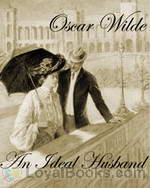 An Ideal Husband
An Ideal Husband
This story opens at a fashionable dinner party in Sir Robert Chiltern's home in the heart of London's stylish Grosvenor Square. One of Lady Chiltern's old school-friends, Mrs. Cheveley, a woman with a dubious past, accosts Sir Robert and threatens to expose a financial crime that he had once participated in, unless he agrees to finance a fraudulent construction project that she's promoting. Lady Chiltern is astounded when her husband who had been the severest critic of this project suddenly begins to speak in its favor... | |
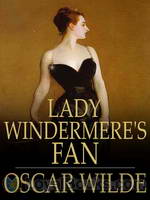 Lady Windermere's Fan
Lady Windermere's Fan
Lady Windermere’s Fan: A Play About a Good Woman is a four act comedy by Oscar Wilde, published in 1893. As in some of his other comedies, Wilde satirizes the morals of Victorian society, and attitudes between the sexes. The action centres around a fan given to Lady Windermere as a present by her husband, and the ball held that evening to celebrate her 21st birthday. | |
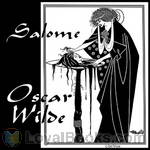 Salome
Salome
The original 1891 version of the play was in French. Three years later an English translation was published. The play tells in one act the Biblical story of Salome, stepdaughter of the tetrarch Herod Antipas, who, to her stepfather's dismay but to the delight of her mother Herodias, requests the head of Iokanaan (John the Baptist) on a silver platter as a reward for dancing the Dance of the Seven Veils. | |
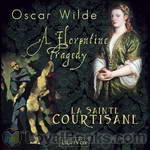 A Florentine Tragedy and La Sainte Courtisane
A Florentine Tragedy and La Sainte Courtisane
Two short fragments: an unfinished and a lost play. A Florentine Tragedy, left in a taxi (not a handbag), is Wilde’s most successful attempt at tragedy – intense and domestic, with surprising depth of characterisation. It was adapted into an opera by the Austrian composer Alexander Zemlinsky in 1917. La Sainte Courtisane, or The Woman Covered in Jewels explores one of Wilde’s great idées fixes: the paradox of religious hedonism, pagan piety. Both plays, Wildean to their core, revel in the profound sadness that is the fruit of the conflict between fidelity and forbidden love... | |
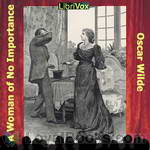 A Woman of No Importance
A Woman of No Importance
A Woman of No Importance is a play by Irish playwright Oscar Wilde. The play premièred on 19 April 1893 at London's Haymarket Theatre. It is a testimony of Wilde's wit and his brand of dark comedy. It looks in particular at English upper class society and has been reproduced on stages in Europe and North America since his death in 1900. | |
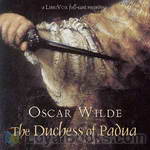 The Duchess of Padua
The Duchess of Padua
Guido Ferranti, a young man, travels to Padua with his friend Ascanio after receiving a mysterious letter from a stranger, claiming to know the true secret of Guido's birth. His plan of revenge goes awry, however, when he falls in love with his enemy's beautiful wife, the Duchess of Padua. | |
 Intentions
Intentions
| |
 Vera; or the Nihilists
Vera; or the Nihilists
Vera; or, The Nihilists is a play by Oscar Wilde. It is a melodramatic tragedy set in Russia and is loosely based on the story of Vera Zasulich. It was the first play that Wilde wrote. It was produced in the United Kingdom in 1880, and in New York in 1882, but it was not a success and folded in both cities. It is nowadays rarely revived. | |
 For Love of the King a Burmese Masque
For Love of the King a Burmese Masque
| |
By: Paul Carus (1852-1919) | |
|---|---|
 The Buddha A Drama in Five Acts and Four Interludes
The Buddha A Drama in Five Acts and Four Interludes
| |
By: Percival Wilde (1887-1953) | |
|---|---|
 The Noble Lord A Comedy in One Act
The Noble Lord A Comedy in One Act
| |
 The Reckoning A Play in One Act
The Reckoning A Play in One Act
| |
By: Percy MacKaye (1875-1956) | |
|---|---|
 Caliban by the Yellow Sands
Caliban by the Yellow Sands
Caliban, the primitive, savage son of the witch Sycorax and the evil frog-tiger god Setebos, seeks to obtain knowledge and become civilized from a strange magician named Prospero and his young daughter, Miranda. Through fantastic visions , poetry, song and dance, thus begins the slow, gradual education of a inquisitive brute as he faces enlightenment and wicked temptation. Serving as a thematic companion piece and maybe spiritual prequel and midquel to William Shakespeare's The Tempest, Caliban by the Yellow Sands was a massive, elaborate and outdoor "community masque" performed from 1916-1917 in New York and Boston as part of the three-hundredth anniversary of Shakespeare's death... | |
By: Philippe de Mornay (1549-1623) | |
|---|---|
 A Discourse of Life and Death
A Discourse of Life and Death
| |
By: Pierre Corneille (1606-1684) | |
|---|---|
 Polyeucte
Polyeucte
| |
By: R. C. Carton (1853-1928) | |
|---|---|
 Lady Huntworth's Experiment
Lady Huntworth's Experiment
Lady Huntworth is in disguise and under cover as a cook. She entertains a number of men and the comedy ensues.- Summary by Michele Eaton Stage Directions: wib66 Captain Dorvastan: adrianstephens Reverend Audley Pillenger: toddhw Reverend Thorsby: Tchaikovsky Gandy: alanmapstone Newspaper Boy: David Purdy Mr Crayll: Larry Wilson Miss Hannah Pillenger: Annie Mars Lucy Pillenger: Matea Bracic Keziah: April6090 Caroline Rayward: Adrienne Prevost | |
By: R. N. Dutta | |
|---|---|
 Tales from the Hindu Dramatists
Tales from the Hindu Dramatists
| |
By: Rabindranath Tagore (1861-1941) | |
|---|---|
 The Post Office
The Post Office
| |
 Chitra, a play in one act
Chitra, a play in one act
| |
 The King of the Dark Chamber
The King of the Dark Chamber
| |
 The Cycle of Spring
The Cycle of Spring
| |
By: Rachel Crothers (1878-1958) | |
|---|---|
 Man's World
Man's World
The mysterious Frank Ware is a woman writer forced to write under a masculine pseudonym in order to win literary respect. Adding to her enigmatic status is the fact that she lives in New York City with her adopted child, a little son of unknown parentage, mystifying her friends by spending all her spare time in the least savory parts of the City, trying to rescue prostitutes from their hard lives. Eventually, even her closest bohemian and artistic companions begin to ask awkward questions, driving her to difficult, life-changing revelations... | |
By: Richard Brinsley Sheridan (1751-1816) | |
|---|---|
 The Rivals
The Rivals
The play is set in Bath in the 18th century, a town legendary for conspicuous consumption and fashion at the time. Wealthy, fashionable people went there to "take the waters", which were believed to have healing properties. The plot centres on the two young lovers, Lydia and Jack. Lydia, who reads a lot of popular novels of the time, wants a purely romantic love affair. To court her, Jack pretends to be "Ensign Beverley", a poor officer. Lydia is enthralled with the idea of eloping with a poor soldier in spite of her guardian, Mrs... | |
 School For Scandal
School For Scandal
Richard Brinsley Sheridan's comedy was first performed in 1777 and focuses on the intrigues and scandals of the British upper classes. Lady Sneerwell wants to marry Charles Surface, while Joseph Surface wants to marry Maria, an heiress and ward of Sir Peter Teazle. Maria, however, prefers Charles over Joseph. In order to detach her from Charles, Lady Sneerwell and Joseph spread rumors about an affair between Charles and Lady Teazle, Sir Peter's new young wife. Meanwhile, Sir Oliver Surface, newly returned from the East Indies, assumes various disguises to test his nephews' characters. Misunderstandings, mistaken identities, gossip, and bad behavior abound in this uproarious comedy. | |
By: Richard Harding Davis (1864-1916) | |
|---|---|
 Miss Civilization
Miss Civilization
Miss Civilization, a one act comedy, tells the story of a young woman who matches wits with three burglars attempting to rob her house. | |
By: Richard Steele (1672-1729) | |
|---|---|
 Funeral: or Grief A-La-Mode
Funeral: or Grief A-La-Mode
The Funeral: or, Grief à-la-Mode, a Comedy, was written in the summer of 1701, and given to Christopher Rich, of the Theatre Royal, Drury Lane, in October. Soon afterwards it was acted, and it was published by Jacob Tonson between December 18 and 20, with the date 1702 on the title-page. The music to the songs, by William Croft, appeared between December 16 and 18. [] The play was revived occasionally in most of the years between 1703 and 1734, and from time to time during the following half-century, the last date, apparently, being April 17, 1799... | |
By: Robert Browning (1812-1889) | |
|---|---|
 Pippa Passes
Pippa Passes
Pippa Passes was a dramatic piece, as much play as poetry, by Robert Browning published in 1841 as the first volume of his Bells and Pomegranates series. The author described the work as the first of a series of dramatic pieces. His original idea was of a young, innocent girl, moving unblemished through the crime-ridden neighbourhoods of Asolo. The work caused outrage when it was first published, due to the matter-of-fact portrayals of many of the area’s more disreputable characters – notably the adulterous Ottima – and for its frankness on sexual matters... | |
 A Blot in the 'Scutcheon
A Blot in the 'Scutcheon
| |
By: Robert Dodsley (1703-1764) | |
|---|---|
 Cleone. A Tragedy
Cleone. A Tragedy
This is a play in 5 acts. From the playwright's preface: "An imperfect hint towards the Fable of the following Tragedy was taken from the Legend of St. Genevieve written originally in French, and translated into English about an hundred years ago by Sir William Lower." It tells a story of jealousy and deceit turning friend against friend to acquire wealth and love. - Summary by Joshua Seeger | |
By: Robert Rogers (1731-1795) | |
|---|---|
 Ponteach The Savages of America
Ponteach The Savages of America
| |
By: Rutherford Mayne (1878-1967) | |
|---|---|
 The Turn of the Road A Play in Two Scenes and an Epilogue
The Turn of the Road A Play in Two Scenes and an Epilogue
| |
 The Drone A Play in Three Acts
The Drone A Play in Three Acts
| |
By: Samuel Low (1765-) | |
|---|---|
 The Politician Out-Witted
The Politician Out-Witted
| |
By: Sara Ware Bassett (1872-1968) | |
|---|---|
 Mrs. Christy's Bridge Party
Mrs. Christy's Bridge Party
| |
By: Shepherd Knapp | |
|---|---|
 The Christmas Dinner
The Christmas Dinner
| |
 Down the Chimney
Down the Chimney
| |
 Up the Chimney
Up the Chimney
| |
By: Sir Arthur Conan Doyle (1859-1930) | |
|---|---|
 The Hound of the Baskervilles (dramatic reading)
The Hound of the Baskervilles (dramatic reading)
The Hound of the Baskervilles is the third of four crime novels by Sir Arthur Conan Doyle featuring the detective Sherlock Holmes. Originally serialised in The Strand Magazine from August 1901 to April 1902, it is set largely on Dartmoor in Devon in England's West Country and tells the story of an attempted murder inspired by the legend of a fearsome, diabolical hound. | |
By: Sophie May (1833-1906) | |
|---|---|
 Prudy Keeping House
Prudy Keeping House
| |
By: Sophocles (495-406 BC) | |
|---|---|
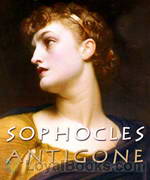 Antigone
Antigone
This is the final installment in Sophocles's Theban Plays, following Oedipus Rex and Oedipus at Colonus. Oedipus's daughter Antigone deliberately breaks the laws of Thebes when she buries her brother's body and is sentenced to death. She clashes with Creon, the King of Thebes, over what constitutes justice and morality: the laws of the state or the laws of the individual. | |
 Electra
Electra
Sophocles' play dramatizes the aftermath of Agamemnon's murder by his wife Clytemnestra and her lover Aegisthus. His daughter Electra is hungry for revenge and longs for the return of her brother Orestes to help her achieve her ends. | |
By: Stanley Houghton (1881-1913) | |
|---|---|
 Hindle Wakes (with accompanying essay)
Hindle Wakes (with accompanying essay)
Alan Jeffcote, son of Nat Hawthorn, Hindle's richest factory owner, meets Fanny Hawthorn, daughter of Nat's 'slasher' and oldest friend, in Blackpool and the two go off for what they believe to be secret fling in Llandudno. But after the death of Fanny's friend, Mary, in a pleasure boat accident at Blackpool the secret is revealed and the the two families are thrown into disarray. The leading light of the so-called Manchester School of realist dramatists, Stanley Houghton wrote Hindle Wakes in 1911 and it was a hit both in Mrs... | |
By: Stephen Phillips (1864-1915) | |
|---|---|
 Nero
Nero
| |
By: Sudraka | |
|---|---|
 The Little Clay Cart Mrcchakatika
The Little Clay Cart Mrcchakatika
| |
By: Susan Glaspell (1876-1948) | |
|---|---|
 Trifles
Trifles
On the surface, this short play is a slice-of-life story about a murder investigation in the rural United States. However, it is also a story about the relationships between men and women, husbands and wives, and the often-overlooked "trifles" which can say so much about a person's life. | |
By: Thomas Baker (fl. 1700-1709) | |
|---|---|
 The Fine Lady's Airs (1709)
The Fine Lady's Airs (1709)
| |
By: Thomas Dekker (1572?-1632) | |
|---|---|
 The Noble Spanish Soldier
The Noble Spanish Soldier
| |
By: Thomas Dixon (1864-1946) | |
|---|---|
 A Man of the People A Drama of Abraham Lincoln
A Man of the People A Drama of Abraham Lincoln
| |
By: Thomas Godfrey (1736-1763) | |
|---|---|
 The Prince of Parthia A Tragedy
The Prince of Parthia A Tragedy
| |
By: Thomas Hardy (1840-1928) | |
|---|---|
 The Dynasts
The Dynasts
| |
By: Thomas Kyd (1558-1594) | |
|---|---|
 The Spanish Tragedie
The Spanish Tragedie
| |
By: Thomas Love Peacock (1785-1866) | |
|---|---|
 Headlong Hall
Headlong Hall
Headlong Hall is the first novel by Thomas Love Peacock, published in 1815 (dated 1816). As in his later novel Crotchet Castle, Peacock assembles a group of eccentrics, each with a single monomaniacal obsession, and derives humor and social satire from their various interactions and conversations. The setting is the country estate of Squire Harry Headlong Ap-Rhaiader, Esq. in Wales. | |
By: Thomas Middleton (1580-1627) | |
|---|---|
 Women Beware Women
Women Beware Women
Thomas Middleton's masterful 17th century tragedy is packed with adultery, incest, intrigue, revenge, and inventive methods for murder. Leantio elopes with Bianca against her family's wishes and tries to hide her in the house he shares with his widowed mother. Yet the Duke sees Bianca at the window and is powerfully attracted to her, threatening Leantio's security. Livia, a wealthy widow, delights in intrigue, aiding the Duke to satisfy his desires with Bianca, and bringing together her brother Hippolito with her niece Isabella, despite their familial relationship... | |
By: Thomas Middleton and Thomas Dekker | |
|---|---|
 The Roaring Girl
The Roaring Girl
The Roaring Girl is a rip-roaring Jacobean comedy co-written by Thomas Middleton and Thomas Dekker and first published in 1611. The play is a fictionalized dramatization of the life of Mary Frith, known as "Moll Cutpurse", a woman who had gained a reputation as a virago in the early 17th century. (The term "roaring girl" was adapted from the slang term "roaring boy", which was applied to a young man who caroused publicly, brawled, and committed petty crimes.) The play combines the exploits of the cross-dressed Moll with the amorous adventures of a trio of merchants' wives, and the forbidden romance between Sebastian Wengrave and Mary Fitzallard. | |
By: Thomas Morton (1764-1838) | |
|---|---|
 Speed the Plough A Comedy, In Five Acts; As Performed At The Theatre Royal, Covent Garden
Speed the Plough A Comedy, In Five Acts; As Performed At The Theatre Royal, Covent Garden
| |
By: Thomas Otway (1652-1685) | |
|---|---|
 Venice Preserved A Tragedy in Five Acts
Venice Preserved A Tragedy in Five Acts
| |
By: Titus Maccius Plautus (254 BCE-184 BCE) | |
|---|---|
 Captives
Captives
Though with some of Plautus's usual comic elements , this is a rare serious play by him looking at slavery and prisoners of war among the various Greek states. From the Prologue: "Really, it will be worth your while to give your attention to this play.... Don't you be afraid because I've said that there's war between the Aetolians and the Eleans. There , at a distance, beyond the scenes, the battles will be fought. For this were almost impossible for a Comic establishment, that we should at a moment attempt to be acting tragedy... | |
By: Unknown | |
|---|---|
 Everyman
Everyman
The Somonyng of Everyman (The Summoning of Everyman), usually referred to simply as Everyman, is a late 15th-century English morality play. Like John Bunyan's novel Pilgrim's Progress, Everyman examines the question of Christian salvation by use of allegorical characters, and what Man must do to attain it. The premise is that the good and evil deeds of one's life will be tallied by God after death, as in a ledger book. The play is the allegorical accounting of the life of Everyman, who represents all mankind... | |
 The Drama: A Quarterly Review
The Drama: A Quarterly Review
This is a collection of theatrical essays from the American quarterly The Drama, including six non-fiction works -- 3 profiles: Schnitzler, Andreyev, and O'Neill, and 3 articles: Characterization vs Situation, The Actor in England, & The Evolution of The Actor. | |
 Oedipus King of Thebes Translated into English Rhyming Verse with Explanatory Notes
Oedipus King of Thebes Translated into English Rhyming Verse with Explanatory Notes
| |
 The Birds
The Birds
| |
 Book of illustrations : ancient tragedy
Book of illustrations : ancient tragedy
| |
 The Acharnians
The Acharnians
| |
 The Flying Doctor (Le Médecin Volant)
The Flying Doctor (Le Médecin Volant)
| |
 The Trojan Women of Euripides
The Trojan Women of Euripides
| |
 Sir John Oldcastle
Sir John Oldcastle
| |
 The Jealousy of le Barbouillé (La Jalousie du Barbouillé)
The Jealousy of le Barbouillé (La Jalousie du Barbouillé)
| |
 Fair Em
Fair Em
| |
 Sword and crozier, drama in five acts
Sword and crozier, drama in five acts
| |
By: Upton Sinclair (1878-1968) | |
|---|---|
 The Machine
The Machine
Upton Sinclair is best known for his novel The Jungle, an expose of the meatpacking industry. He was also a playwright whose works for the stage reflected the same progressive viewpoints found in his other writing. In The Machine, published as part of Sinclair's 1912 collection Plays of Protest, Socialist activists show a rich man's daughter the truth about the society in which she has been raised. | |
 Naturewoman
Naturewoman
The Mastersons, a wealthy Bostonian family, await the arrival of their cousin Anna in the wake of her grandfather's death. Though born in Boston, Anna, who prefers the name Oceana, spent most of her life on a tropical island in the Pacific with her father. A free spirit, her practices and values surrounding proper dress, romance, and entertainment clash with those of her conservative relatives. What will happen as patience and tolerance wear thin for both parties when alluring Oceana catches the... | |
 The Second-Story Man
The Second-Story Man
| |
 Prince Hagen
Prince Hagen
| |
By: Various | |
|---|---|
 One-Act Play Collection 003
One-Act Play Collection 003
This collection of ten one-act dramas features plays by Edward Goodman, Alice Gerstenberg, Arnold Bennett, John Galsworthy, Anton Chekhov, Frank Wedekind, Moliere, Theresa Helburn, John Kendrick Bangs, and Harold Brighouse. | |
 One-Act Play Collection 002
One-Act Play Collection 002
This collection of eight one-act dramas features plays by Eugene O'Neill, George Bernard Shaw, John Galsworthy, Susan Glaspell, William Dean Howells and John Millington Synge. It also includes a dramatic reading of a short story by Frank Richard Stockton. | |
 One Act Play Collection 004
One Act Play Collection 004
This collection of twelve one-act dramas features plays by James Allen, John Kendrick Bangs, Gordon Bottomley, Charles Dickens, Lord Dunsany, Susan Glaspell, George Bernard Shaw, August Strindberg, Marion Craig Wentworth, and William Butler Yeats. The plays were coordinated by Elizabeth Barr, Margaret Espaillat, Amanda Friday, Elizabeth Klett, Kristingj, David Lawrence, Algy Pug, Todd, and Chuck Williamson. | |
 Washington Square Plays
Washington Square Plays
| |